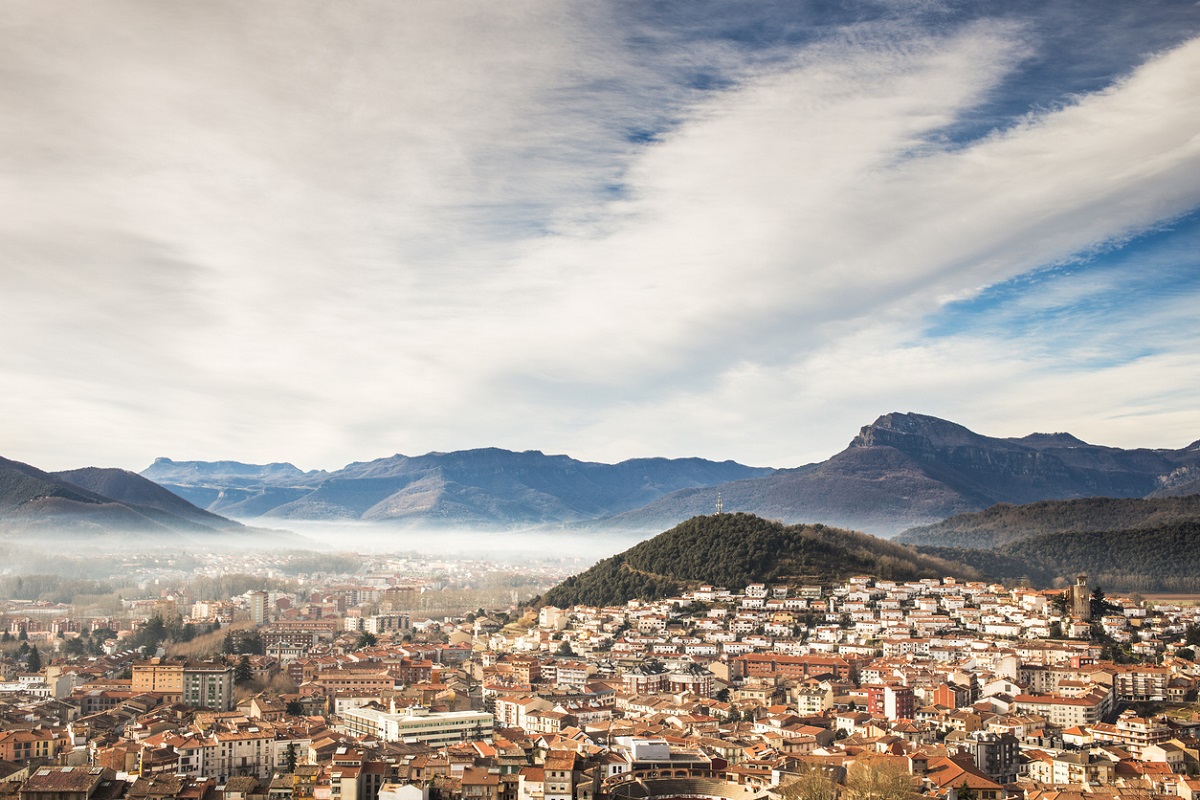Cold storage association demands storage rent rise from govt
West Bengal Cold Storage Association held their 60th annual general meeting on Wednesday.
The rise in the number of pediatric Covid cases in the state has also raised concern among experts about the possible lingering of the second wave or the early onset of the third wave.

Cloudy landscape of Olot in la Garrotxa. Girona. (Representational Image: iStock)
After days of unfolding horror unleashed by the second Covid wave in Darjeeling district, along with the rest of India, there was a glimmer of hope when the country finally saw a steady trend of decline in new cases and also in the number of deaths due to the virus in the weeks between May 10 and June 21.
However, the subsequent worrying trend of increase in many states, including Darjeeling district in West Bengal, and the overall rise in new cases in the country by 19 percent and 6.3 percent on June 22 and 23, respectively, as well as the number of cases in West Bengal fluctuating between the 1800 and 1900 mark during the past few days indicates that the second wave is far from being over and the relief was only partial.
Advertisement
The rise in the number of pediatric Covid cases in the state has also raised concern among experts about the possible lingering of the second wave or the early onset of the third wave. The government on Friday said that though there has been a decline of over 83 percent in active Covid-19 cases across the country over the last few weeks, the second wave of the coronavirus pandemic was not yet over in India, with 75 districts of the country still having more than 10 percent prevalence of Covid-19 cases, while 92 districts have a 5 to 10 percent prevalence.
Advertisement
The Indian Council of Medical Research director general Dr Balram Bhargava warned on behalf of the government that the second wave of Covid-19 was not yet over though a large part of the country is out of it. In a statement issued today, Bhramar Mukherjee, the John D Kalbfleisch Collegiate Professor of Biostatistics at the University of Michigan, USA, who had predicted an imminent second wave in India in February, warned that the weekon-week rate of growth for Covid-19 cases is beginning to show a slight uptick in Maharashtra, Kerala, Andhra Pradesh and Delhi.
Ms Mukherjee and her team, who monitor the week-on-week relative rate of change of cases, cautioned that there was still enough virus in the community and there were new mutations happening, so it was a very dangerous time to reopen fully and let our guard down. Experts in north Bengal, who agreed with Dr Bhargava and Ms Mukherjee, are also not convinced enough to declare the end of the second wave in the country.
They felt that warnings of Dr Bhargava and Ms Mukherjee indicated that India had not yet turned a corner and should not proceed with abrupt and aggressive reopening. While it is safe to say that the worst is over, according to the experts, the holistic picture should not discount the emerging new variants which have sparked fears globally and started third waves in countries like the UK.
Additionally, some parts of India are still seeing a positivity rate over and above 5 percent, they pointed out. The head of the department of Physical Medicine and Rehabilitation, North Bengal Medical College and Hospital, Dr Partha Pratim Pan, who stressed on the need to work aggressively to prevent another large wave till vaccination kicks in, warned that the third wave of the pandemic can hit India very soon if Covidappropriate behaviour was not followed.
“It is true that we are not seeing as many horror stories as we were about two or three weeks back, but it may be mainly because we are in a period where a good part of India is still under restrictions. So it’s difficult for us to say with certainty that this happy state of affairs will continue even after the lockdown is completely lifted from all over the country. We saw in the first wave that after the lockdown was relaxed in June 2020, the cases went up and peaked around midSeptember. We do not know how much of a rise will happen now. The vaccination drive is going on at a steady pace but it is impossible to inoculate our entire population in even a year. So it is likely that the number of susceptible people will be quite large when we open up completely after the current wave,” he said.
Dr Pan suggested that instead of “micro-containment” zones, the government should identify zero-infection zones and declare them as “micro-relaxation” zones. “I agree that we should not really prolong the lockdown. But the most important thing is how we emerge from the lockdown, keeping some of the safeguards in place while getting on progressively with the resumption of our normal activities.
That is where the authorities should adopt innovative techniques to contain the spread of the virus, besides insisting on personal protection in terms of masking, using soaps and sanitizers and maintaining physical distancing. I think the government should identify areas with no or very few infections and allow free movement and normal economic activities within those specified areas and should not allow people to move into or out of these areas. The restrictions should be strictly imposed and severe punitive action should be taken against those who violate these or other Covidrelated norms,” he said.
Advertisement